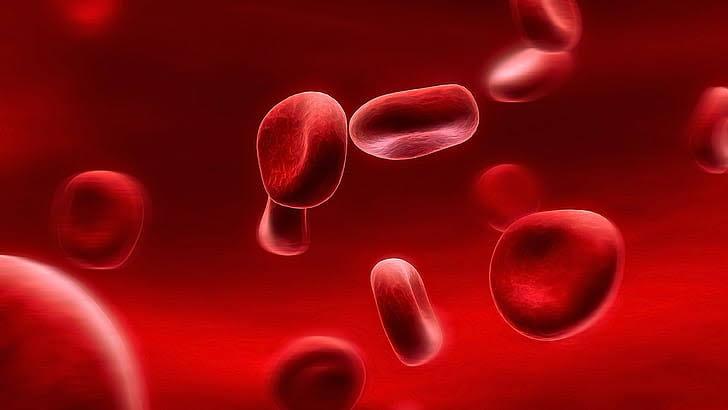Sickle cell anaemia (Sickle Cell Disease) is a genetic disorder that affects millions of people worldwide. This chronic condition can cause a range of health problems, and it’s crucial to have a comprehensive understanding of its symptoms, causes, risk factors, complications, and preventive measures. Additionally, knowing when to seek medical attention is essential for individuals living with sickle cell anaemia. This blog will explore these aspects of sickle cell anaemia in detail.
What are the Symptoms of Sickle Cell Anaemia (Sickle Cell Disease)?
Sickle Cell Disease is characterised by a mutation in the haemoglobin gene, which produces abnormal haemoglobin known as haemoglobin S (HbS). This results in the formation of misshaped red blood cells, which can cause a variety of symptoms. Common symptoms include:
- Pain Crises: One of the most recognisable symptoms of sickle cell anaemia is a pain crises, also known as a vaso-occlusive crises. These episodes can be excruciating and occur when the sickle-shaped red blood cells block blood flow to tissues and organs.
- Fatigue: Due to the reduced oxygen-carrying capacity of the abnormal red blood cells, individuals with sickle cell anaemia often experience fatigue and weakness.
- Anaemia: Sickle cell anaemia can lead to chronic anaemia, resulting in pale skin, jaundice (yellowing of the skin and eyes), and decreased energy levels.
- Swelling of Hands and Feet: The blocked blood flow can cause the hands and feet to swell.
- Frequent Infections: Sickle cell anaemia can weaken the immune system, making affected individuals more susceptible to infections.
What are the Causes of Sickle Cell Anaemia (Sickle Cell Disease)?
Sickle cell anaemia is primarily caused by a genetic mutation. Individuals inherit one copy of the abnormal hemoglobin gene from each parent, leading to the production of abnormal hemoglobin S. When both parents are carriers (have one abnormal gene), their child has a 25% chance of inheriting two abnormal genes and developing sickle cell anaemia.
What are the Risk Factors of Sickle Cell Anaemia (Sickle Cell Disease)?
The key risk factor for sickle cell anaemia is having a family history of the disease. However, there are other factors to consider:
- Ethnic Background: People of African, Mediterranean, Middle Eastern, or Indian descent are at higher risk.
- Family History: If one or both parents carry the sickle cell gene, their offspring may inherit the disease.
What are Complications of Sickle Cell Anaemia (Sickle Cell Disease)?
Sickle cell anaemia can lead to various complications, including:
- Stroke: Blocked blood vessels can cause strokes, particularly in children with sickle cell anaemia.
- Organ Damage: Reduced blood flow can damage organs such as the spleen, liver, and kidneys.
- Pulmonary Hypertension: Sickle cell anaemia can lead to high blood pressure in the lungs, which can strain the heart.
- Delayed Growth: Children with sickle cell anaemia may experience delayed growth and development.
What are the Prevention of Sickle Cell Anaemia (Sickle Cell Disease)?
Preventing sickle cell anaemia is primarily a matter of genetic counseling and testing. Couples at risk of passing on the disease can undergo genetic counseling to understand their options, such as in-vitro fertilization or adoption. Early detection through prenatal testing can also help parents make informed decisions.
Who Are Affected by Sickle Cell Anaemia (Sickle Cell Disease)?
Sickle cell anaemia affects people of various ethnic backgrounds, but it is more common in individuals of African, Mediterranean, Middle Eastern, or Indian descent. In the United States, it is estimated that approximately 100,000 people live with this condition.
When to See a Doctor with Sickle Cell Anaemia (Sickle Cell Disease):
If you or your child has sickle cell anaemia or is at risk due to family history, it’s crucial to maintain regular medical check-ups and seek immediate medical attention when necessary. Specific situations that warrant prompt medical attention include:
- Pain Crises: Severe pain episodes require immediate medical care.
- Fever: A fever could be a sign of an infection, which can be more severe in individuals with sickle cell anaemia.
- Breathing Difficulties: Any difficulty in breathing should be evaluated promptly.
- Jaundice: Yellowing of the skin or eyes should be reported to a healthcare provider.
Conclusion
Sickle cell anaemia is a complex genetic disorder that can significantly impact the lives of affected individuals. Understanding the symptoms, causes, risk factors, complications, and preventive measures associated with sickle cell anaemia is crucial. Equally important is knowing when to seek medical attention, as prompt care can help manage the condition and improve the quality of life for those living with it. Genetic counseling and testing play a vital role in preventing the disease in high-risk families, ensuring a healthier future for the next generation.




